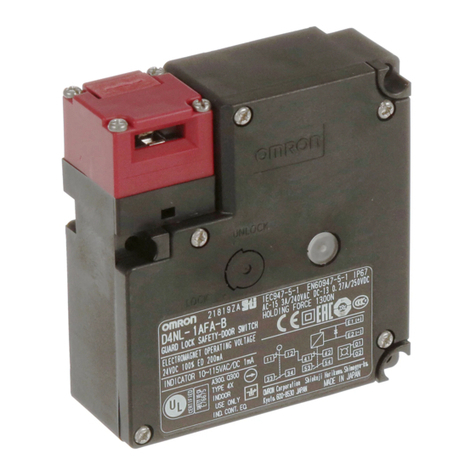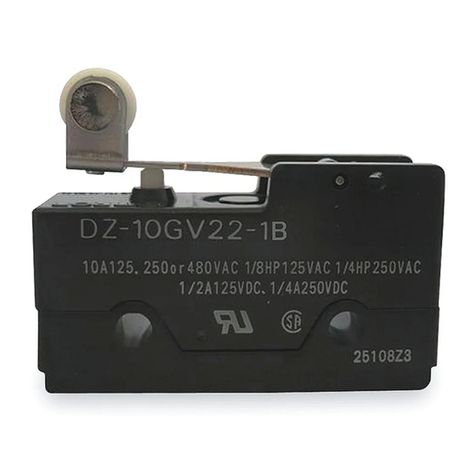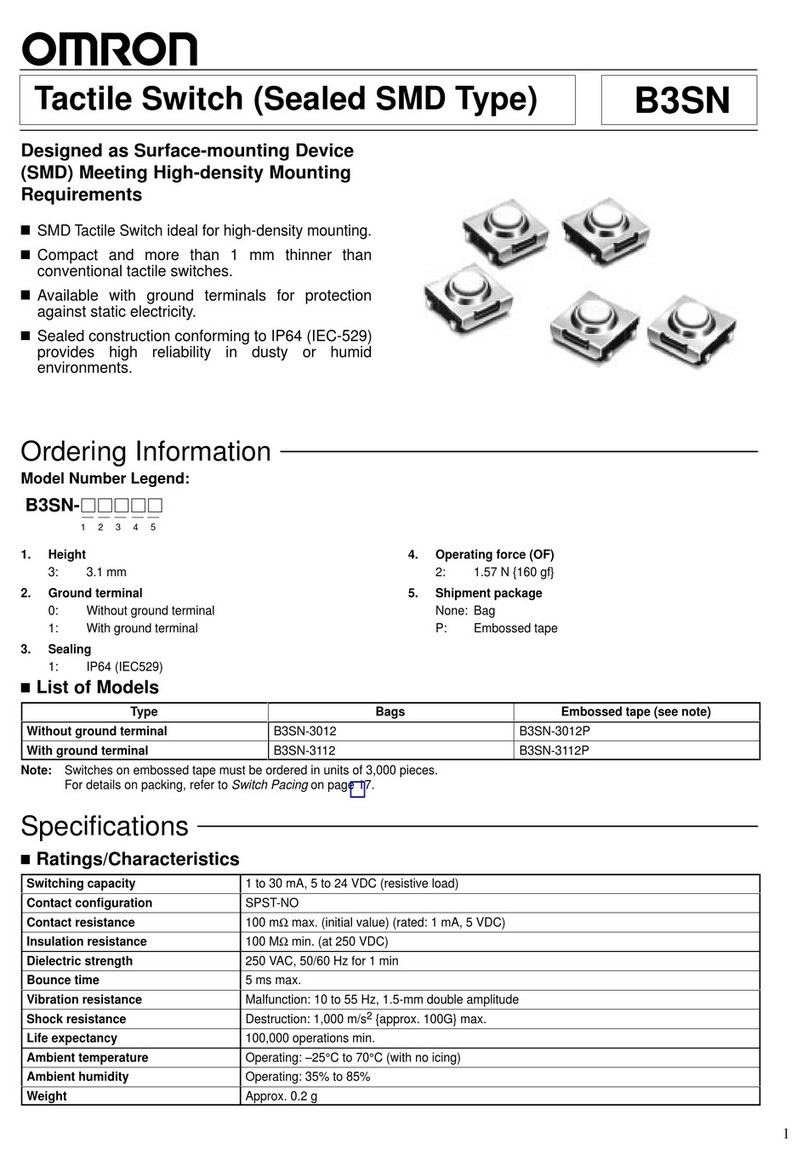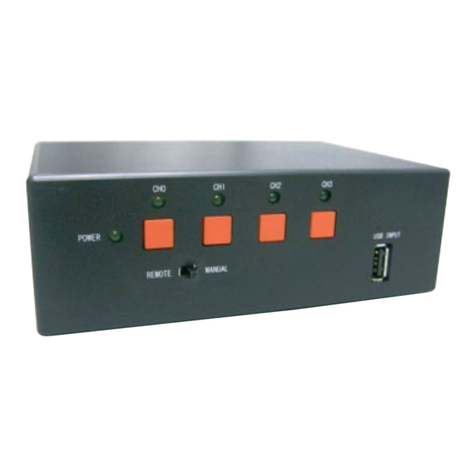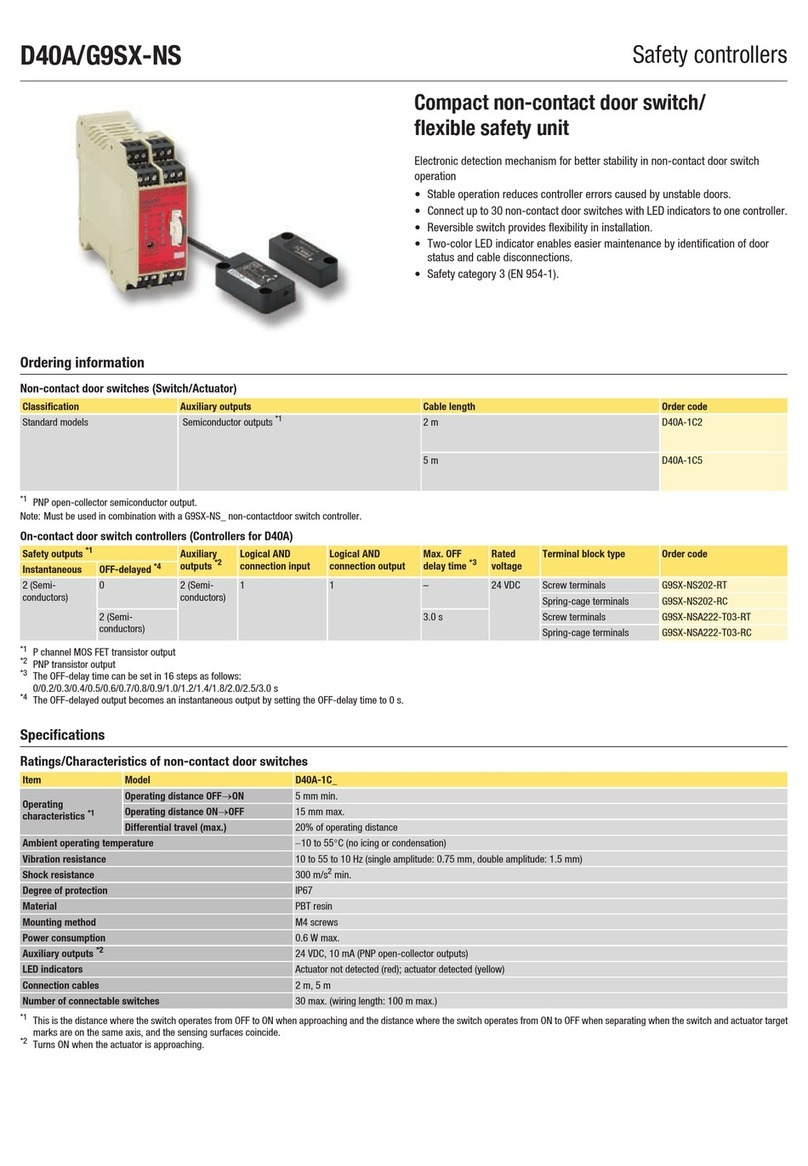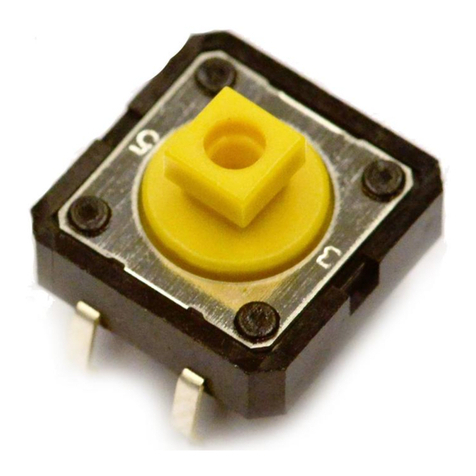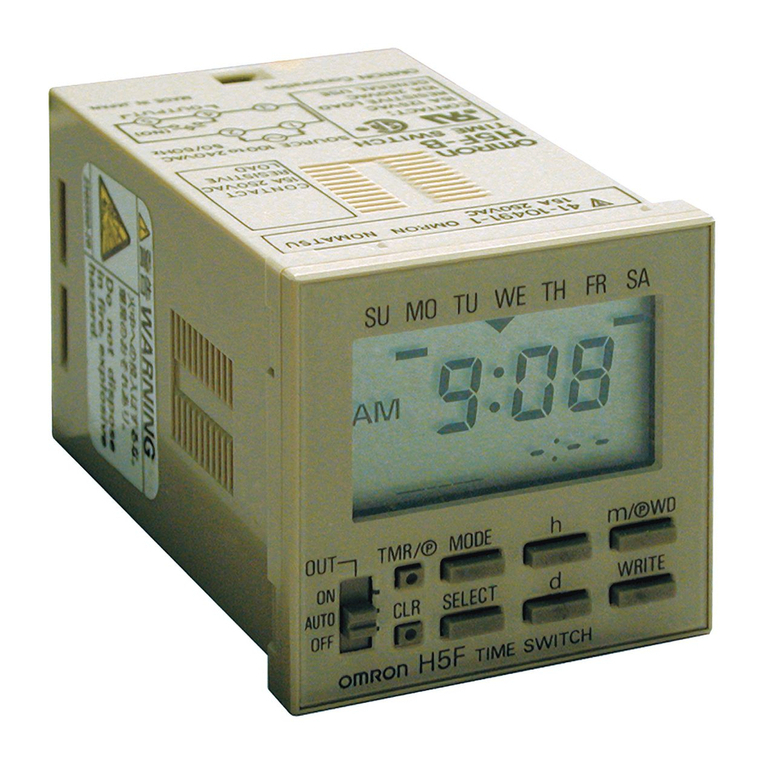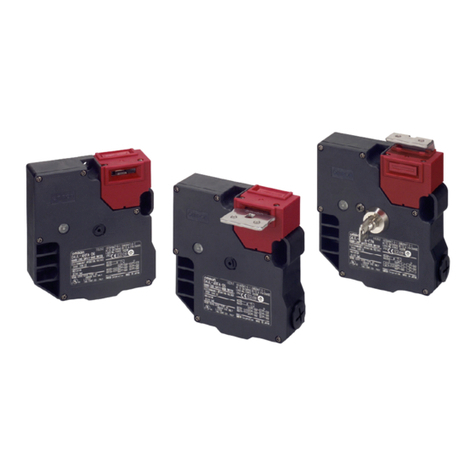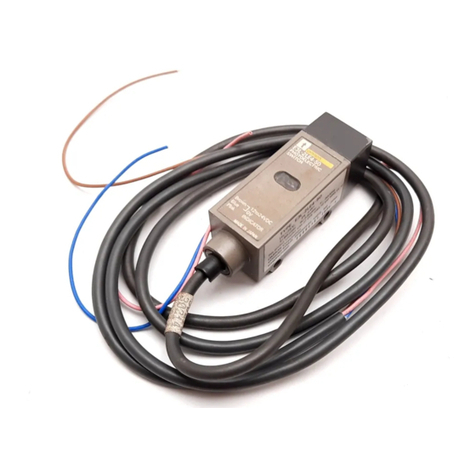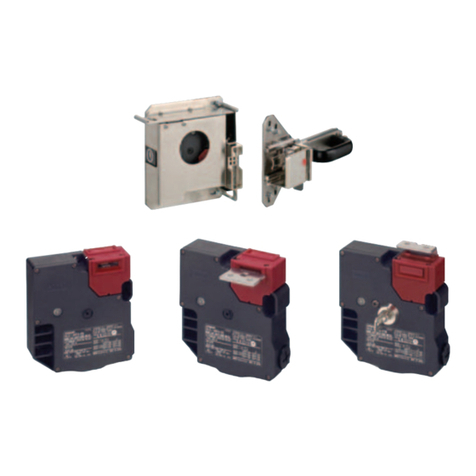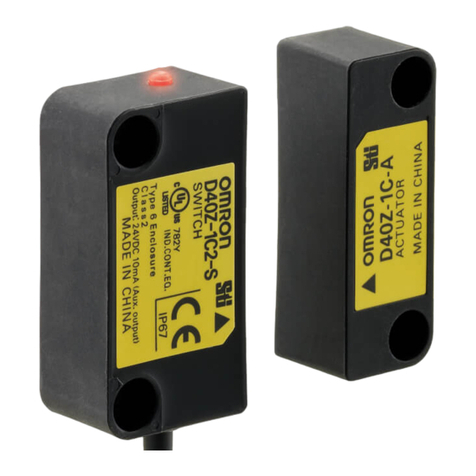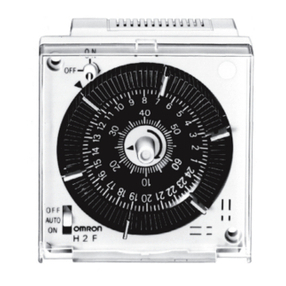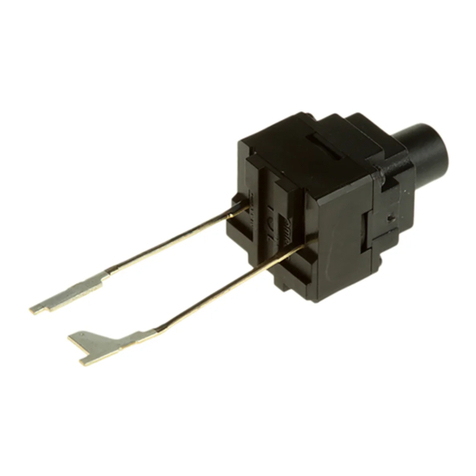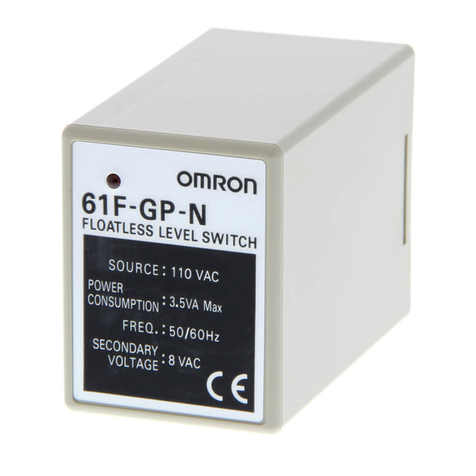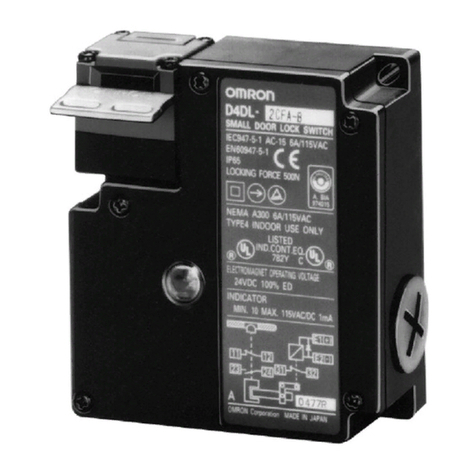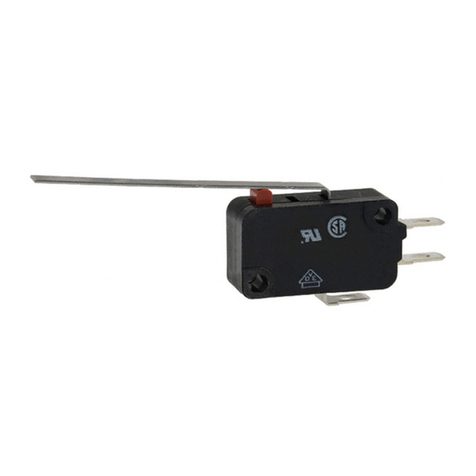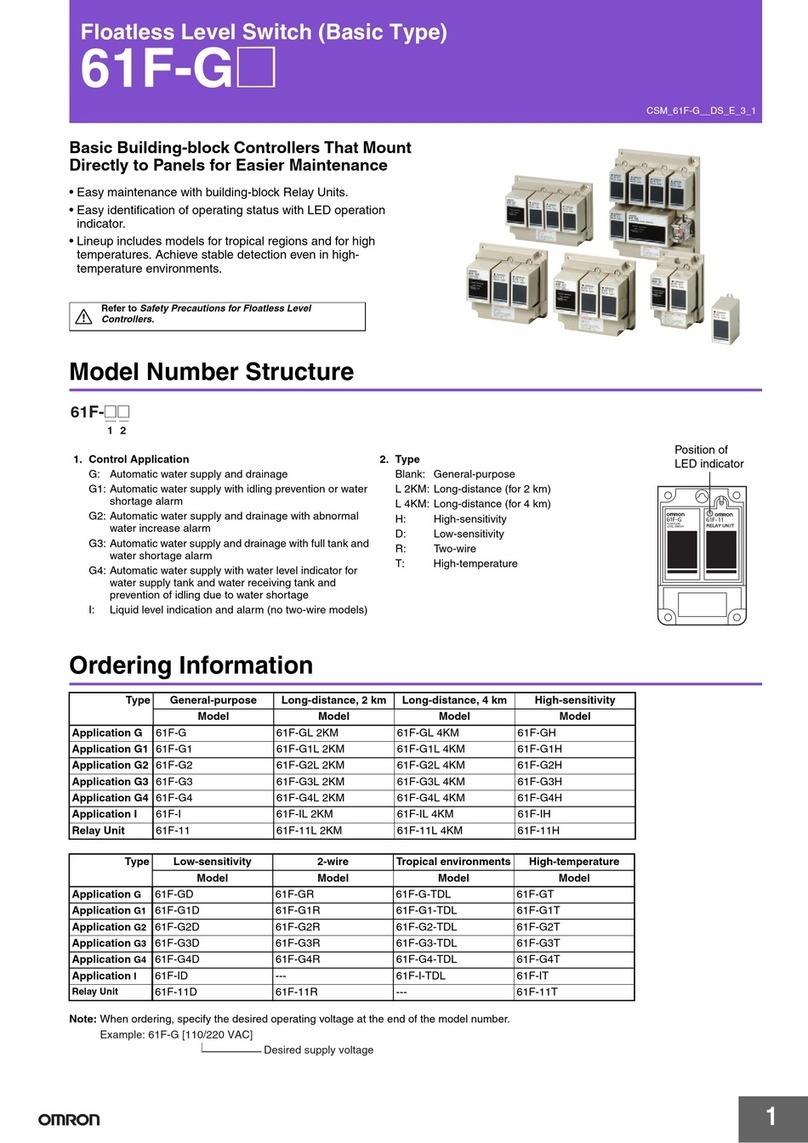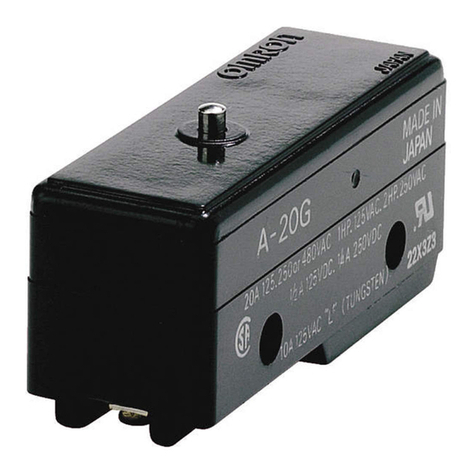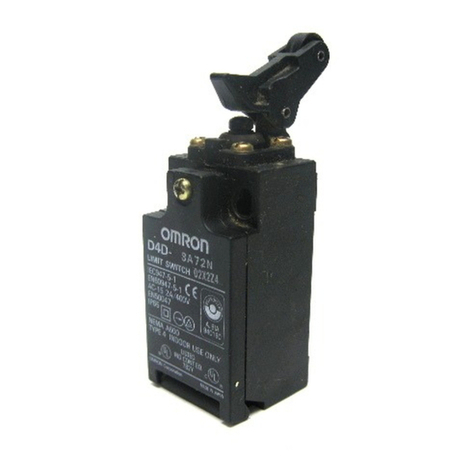
G-214 Safety Sensors / Components
Safety Precautions
Refer to OMRON SAFETY COMPONENTS SERIES (Y106) for
common precautions for Switches and Safety Limit Switches.
Do not use metal connectors or metal conduits with this Switch.
Doing so may occasionally result in electric shock.
Precautions for Safe Use
•Do not drop the
Switch
. Doing so may result in the
Switch
not
performing to its full capacity.
•Do not attempt to disassemble or modify the
Switch
. Doing so may
cause the
Switch
to malfunction.
•Do not use the
Switch
where explosive gas, flammable gas, or any
other hazardous gas may be present.
•Install the Switch in a location away from close body contact. Not
doing so may result in malfunction.
•
Do not use the Switch submerged in oil or water, or in locations
continuously subject to splashes of oil or water. Doing so may result
in oil or water entering the Switch interior. (The IP67 degree of
protection specification for the Switch refers to water penetration
while the Switch is submersed in water for a specified period of
time.)
•Protect the head from foreign material. Subjecting the head to
foreign material may result in premature wear or damage to the
Switch. Although the switch body is protected from penetration by
dust or water, the head is not protected from penetration by minute
particles or water.
•Turn the power OFF before wiring. Doing so may result in electric
shock.
•Install a cover after wiring. Not doing so may result in electric
shock.
•Connect a fuse to the Switch in series to protect the Switch from
short-circuit damage. Use a fuse with a breaking current 1.5 to 2
times larger than the rated current. To conform to EN ratings, use
an IEC60269-compliant 10-A fuse type gI or gG.
•Do not switch circuits for two or more standard loads (250 VAC,
3 A) at the same time. Doing so may adversely affect insulation
performance.
•The durability of the Switch is greatly affected by operating
conditions. Evaluate the Switch under actual working conditions
before permanent installation and use within a number of switching
operations that will not adversely affect the Switch’s performance.
•Be sure to indicate in the machine manufacturer’s instruction
manual that the user must not attempt to repair or maintain the
Switch and must contact the machine manufacturer for any repairs
or maintenance.
•If the Switch is to be used in an emergency stop circuit or in a
safety circuit for preventing accidents resulting in injuries or deaths,
use a model that has an NC contact equipped with a direct opening
mechanism and make sure that the Switch operates in the direct
opening mode.
Precautions for Correct Use
Environment
•The Switch is intended for indoor use only.
•Do not use the Switch outdoors. Doing so may cause the Switch to
malfunction.
•Do not use the Switch where hazardous gases (e.g., H2S, SO2,
NH3, HNO3, CI2) are present or in locations subject to high
temperature and humidity. Doing so may result in damage to the
Switch caused by contact failure or corrosion.
•Do not use the Switch under any of the following conditions.
•Locations subject to extreme temperature changes.
•Locations where high humidity or condensation may occur.
•Locations subject to excessive vibration.
•Locations where metal dust, processing waste, oil, or chemicals
may penetrate through the protective door.
•Locations subject to detergents, thinner, or other solvents.
Mounting Method
Mounting Screw Tightening Torque
Tighten each of the screws to the specified torque. Loose screws
may result in malfunction of the Switch within a short time.
Switch Mounting
•Mount the Switch using M4 screws and washers and tighten the
screws to the specified torque.
•For safety, use screws that cannot be easily removed, or use an
equivalent measure to ensure that the Switch is secure.
•Secure the Switch with two M4 bolts and washers. Provide studs
with a diameter of 4−0.05/−0.15 and a height of 4.8 mm max. at two
places, inserting into the holes at the bottom of the Switch as
shown below so that the Switch is firmly fixed at four points.
Switch Mounting Holes
•Mount the shaft or arm lever securely with a one-way screw, or an
equivalent so that the shaft or arm lever cannot be easily removed.
•Align the rotational center of the shaft with the door, so that the
switch shaft and head will not be subjected to mechanical stress
when the door opens or closes.
Do not impose a force of 50 N or more on the shaft.
Be sure that the arm lever and door are mounted as shown in the fol-
lowing diagram so that the arm lever and head are not subjected to
mechanical stress when the door opens or closes.
CAUTION
Terminal screw 0.6 to 0.8 N·m
Cover clamping screw 0.5 to 0.7 N·m
Head clamping screw 0.5 to 0.6 N·m
Arm lever clamping screw 1.6 to 1.8 N·m
Body clamping screw 0.5 to 0.7 N·m
Conduit mounting connection, M12
adaptor 1.8 to 2.2 N·m
1.4 to 1.8 N·m (1/2-14NPT)
Cap screw 1.3 to 1.7 N·m
22±0.1
47±0.1
20±0.1
22±0.1
2.5±0.1 Two, M4
−0.15
4
−0.05
dia.
Hei
ht: 4.8 max.
42±0.1
39±0.1
20±0.1
22±0.1
40±0.1
42±0.1
2.5±0.1
5.35±0.1
Two, M4
−0.15
4
−0.05
dia.
Height: 4.8 max.
One-conduit Type
Two-conduit Type
F502-EN2-04.book Seite 214 Dienstag, 26. Juli 2005 5:48 17

